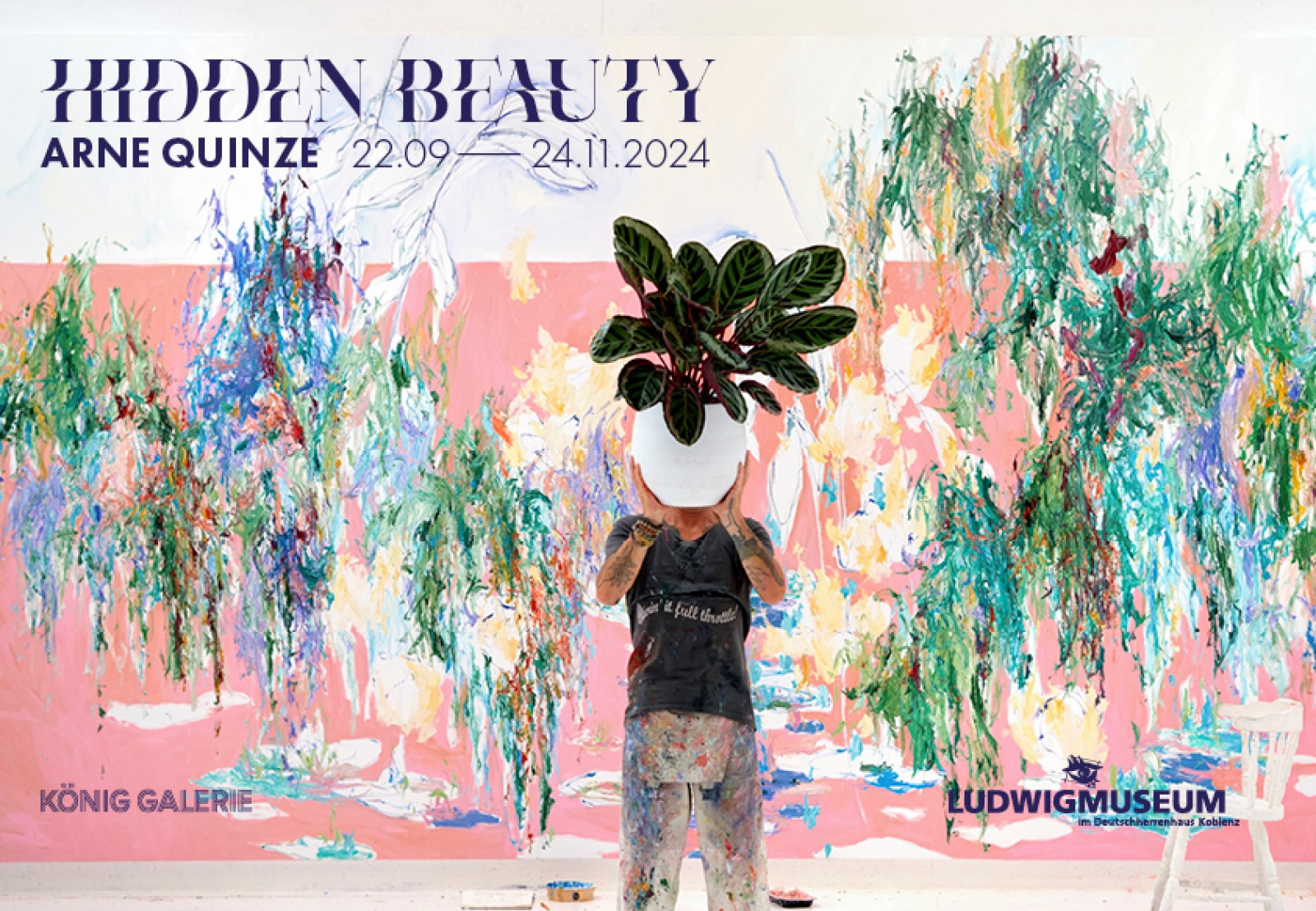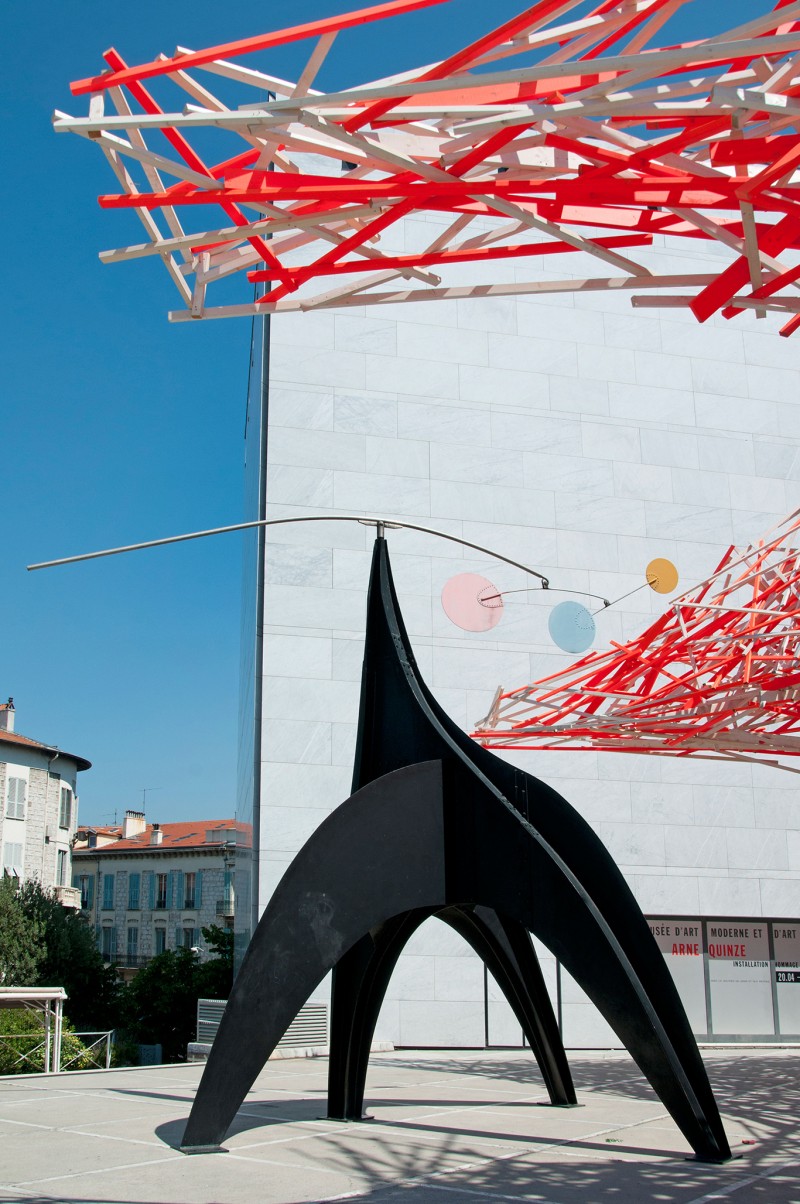
Ludwig Museum, Koblenz
Hidden Beauty
Arne Quinze, born in Ghent, Belgium, and growing up in the lush Flemish polders, drawing endless inspiration from nature, is an artist whose work bridges the realms of nature and urbanity.
His artistic beginnings lay back in the 1980ties, when the grey streets of Brussels caused a refuge in rebellion. He felt influenced by the underground culture of that period, by experimental electronic music, and manga anime, and Arne Quinze immediately began merging the intensity of the digital era with the diversity of nature. He transformed urban spaces into dynamic canvases of expression through both 2D paintings and 3D sculptures and installations that have a significant impact on these environments.
For over three decades, Quinze has dedicated his work to exploring the intricate relationship between nature and human-made environments. Besides street art, he started to create complex sculptural structures, which interweaved with urban spaces and challenging architectures. Thus, he already melted the creative forces, inspired by nature into these strange, but intriguing structures, which seemingly evolved from inner forces and movements. Even though they appear more architectonical, they developed by the time more into a flourishing, colourful organism. Quinze, who implemented his large-scale sculptural ensembles into urban spaces as well as in natural surroundings, left his former architectural constructions behind and turned his attention to only natural similarities.
Quinze is drawing inspiration from the wildflower garden surrounding his atelier - a sanctuary of biodiversity cultivated over more than a decade. Being interested in biodiversity and the free creativity of nature, he documents the complex interplay between strength and vulnerability, capturing the essence of life in all its forms.
As much as possible Arne Quinze aims to preserve nature and to raise an awareness of the today’s risks of their destruction. As an artist, he meticulously records the delicate balance of existence—from vibrant blooms to inevitable decay. At the core of Arne Quinze’s artistic vision lies the profound Japanese concept of “Mono No Aware,” a notion that celebrates the transient beauty inherent in life’s cycles of growth and decay.
Ground floor
This part of the exhibition features an immersive room with a landscape of Chroma Lupine sculptures, leading to a video wall showcasing an AI-driven short film. The comprehensive art installation blends seamlessly sculptural elements with video.
These sculptures reflect Arne Quinze’s deep and enduring connection with the Wild Lupine Flower. Although the lupine thrives in its natural habitat, it is significantly impacted by monoculture. Quinze views his Lupine sculptures as "first sprouts" within harsh architecture dominated urban surrounds and like a symbol of nature, which irresistibly reclaims urban spaces.
The AI-generated video installation presents a collage of clips narrating a fictional world where humans have merged with the plant and flower kingdom. Creating hybrid human beings with plants that not only adorn their bodies but grow as an integral part of them, intertwining with their flesh and bones. With this installation, Arne Quinze explores how we, as humans, in our relentless pursuit of control, might drive nature to a point of transformation, resulting in a metamorphosis where organic growth is replaced by artificial imitations that adorn our presence. He poses a fundamental question: How would humans interact with nature if it were truly a part of us?
He questions as well the options of living in a natural surrounding, which is diminishing and how human beings will be able to survive in future.
1st Floor
Arne Quinze composed this space by a number of new oil paintings, which mark a new chapter in his artistic expressions. Deeply inspired by painters from the late 19ths and early 20ths century, he is attracted by the possibilities of today’s painting, which allow him to search and to express the seemingly undefeatable forces by nature. It is this concept of hidden beauty that is visible throughout all the masters from previous centuries, especially in paintings from Monet, Manet, Cezannes, Derain, Picasso, as well as the concept of transition, fragility and death like in works from Helene Frankenthaler, Lucian Freud and Francis Bacon.
Through his paintings, he creates an echo to the essence of nature, from vibrant blooms to inevitable decay. His goal extends beyond merely depicting flowers, plants, and hedges; he aims to portray their powerful dialogue, transcending the visual realm to convey a profound impression. He integrates colours according to the inventions in nature and with his flowing brushstrokes in his paintings, he seems to just celebrate beauty. Nevertheless, it lays beyond this impression, that he is more interested in the vanishing fragility of a once powerful nature. The paintings are as well a counterpart to his immersive environments, where the artificiality of a future life is envisioned.
Public wooden installation
A Tribute to Alexander Calder
In 1970, Alexander Calder creates Stabile-Mobile, a sculpture enthroned on the esplanade of the...
Siberica, a Wildflower Fields painting
In Quinze's oil paintings, the artist is on a constant quest to unveil the mesmerizing interplay...



